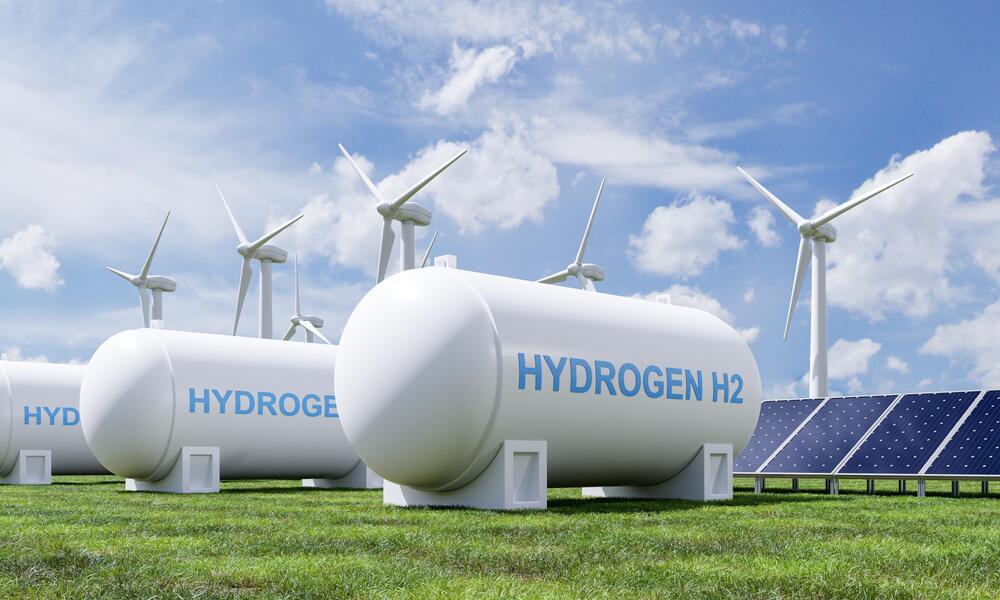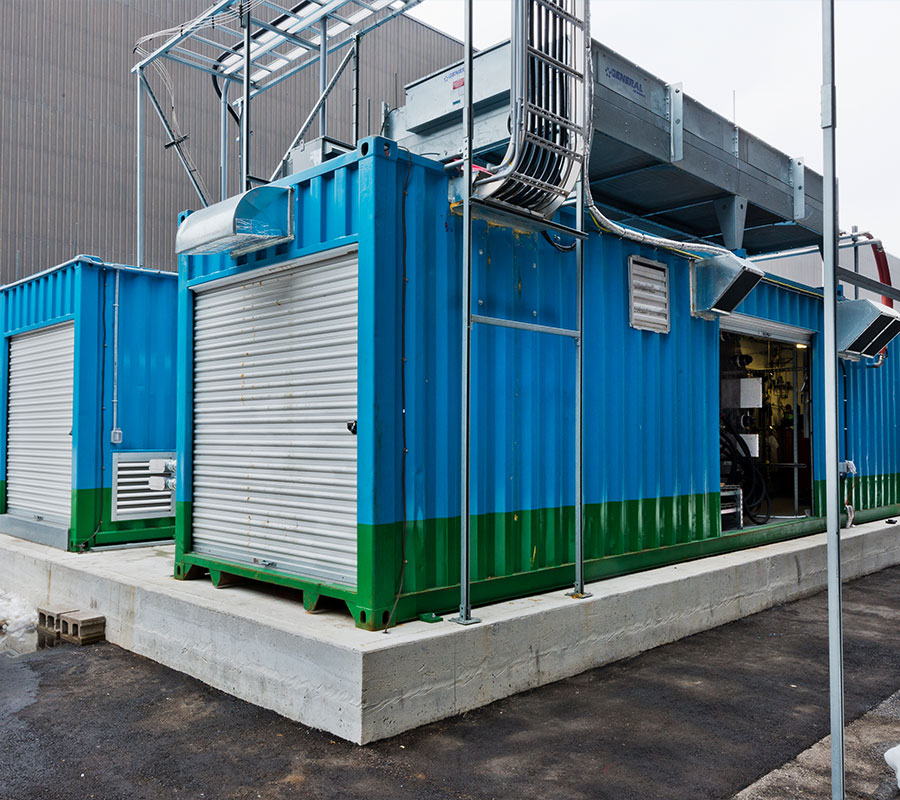
The Inflation Reduction Act (IRA) has impacted the hydrogen industry, but collaborations such as Next Hydrogen's additional purchase order from Casale and SoCalGas-Bloom Energy's Caltech project persist, showcasing the enduring momentum fueled by partnerships and end-user commitments.
Let's delve into the specific technologies, insights from key figures shaping the future, and the economic potential and challenges on the horizon.
Next Hydrogen and Casale: Advancing Decarbonized Ammonia and Methanol
In Ontario, Canada, Next Hydrogen Solutions, a leader in water electrolysis, has secured a consequential follow-on purchase order from Casale, a prominent entity in ammonia and methanol plant design. This collaboration goes beyond a mere transaction; it signifies a commitment to a more sustainable future.

Next Hydrogen's advanced Proton Exchange Membrane (PEM) electrolyzers power Casale's green ammonia and methanol plants, employing renewable energy to generate hydrogen and oxygen. This process enables the carbon-neutral production of chemicals conventionally reliant on fossil fuels. Casale CEO Marco Pastore underscores, "Next Hydrogen's technology provides efficiency and scalability, seamlessly integrating hydrogen into our processes and substantially reducing our carbon footprint."
This collaboration originates from a Memorandum of Understanding, underscoring their shared vision of incorporating Next Hydrogen's electrolyzers into Casale's plants, with the objective of disassociating crucial industrial processes from fossil fuels for sustainable production.
Conceptualize it as a strategic partnership: Casale, the architect, orchestrates plant design; Next Hydrogen, the specialist, introduces state-of-the-art electrolyzer technology. Together, they engineer a symphony of clean ammonia and methanol production, envisioning a future devoid of greenhouse gas emissions.
SoCalGas and Bloom Energy Illuminate Caltech with Hydrogen
In California, SoCalGas, a major natural gas utility, collaborates with Bloom Energy, a pioneer in solid oxide fuel cell technology, to implement a hydrogen initiative at Caltech. This initiative extends beyond mere power generation; it serves as a forward-looking laboratory, spotlighting the myriad possibilities of hydrogen.
The project integrates electrolyzers powered by solar or wind energy to extract hydrogen from water. This hydrogen is then blended with natural gas, fueling Bloom Energy's fuel cells, generating dependable and environmentally friendly electricity for Caltech's research and learning. These fuel cells efficiently convert hydrogen into electricity with minimal emissions, making them ideal for distributed generation and grid resilience.
SoCalGas CEO Dane G. Deluca elaborates, "Bloom Energy's SOFCs deliver clean, reliable power for Caltech, providing valuable grid support services. The project serves as a benchmark for future hydrogen integration across California."
The initiative aligns with California's clean energy objectives, endorsing a shift away from fossil fuels and highlighting hydrogen's seamless integration into existing energy infrastructure, establishing a precedent for broader adoption. It serves as a guiding light for institutions aspiring to a sustainable future, directing them towards the adoption of clean energy solutions.
These strategic initiatives exemplify the convergence of industry expertise and technological innovation. As these collaborations gain momentum, they not only address the current challenges faced by the hydrogen sector but also pave the way for a cleaner and more sustainable energy landscape.
Champions of the Hydrogen Revolution
"The partnership with Next Hydrogen is a game-changer for Casale," emphasizes Pastore. "It allows us to not only reduce our own emissions but also offer our customers green ammonia and methanol solutions, accelerating the chemical industry's transition towards sustainability."
Caltech's Chief Sustainability Officer, Bill Green, echoes this sentiment: "We are thrilled to be at the forefront of hydrogen innovation with SoCalGas and Bloom Energy. This project not only aligns with our commitment to carbon neutrality but also demonstrates the viability of hydrogen as a clean and reliable energy source for universities and other institutions."
Unlocking the Economic Power of Hydrogen
Beyond environmental benefits, hydrogen unlocks significant economic potential. McKinsey & Company estimates that that continued advancements in hydrogen technologies will pave the way for broader adoption and integration into existing energy infrastructure, unlocking its potential as a versatile and sustainable energy source. This growth will be seen in:
- Electrolysis and renewable energy: Building and operating electrolyzers, along with the necessary renewable energy infrastructure for green hydrogen production and storage facilities.
- Hydrogen transportation and distribution: Developing and deploying hydrogen pipelines, refueling stations, and other infrastructure for efficient transportation and distribution across various sectors.
- Fuel cell technology and applications: Advancing fuel cell technologies and expanding their deployment in transportation, power generation, and industrial sectors to support diverse clean energy needs.
- Hydrogen integration in hard-to-decarbonize sectors: Implementing hydrogen solutions in industrial processes like steelmaking, chemicals production, and other hard-to-decarbonize sectors to achieve broader emission reductions.

Despite the promising outlook, hurdles remain on the road to widespread hydrogen adoption. These include:
- High upfront costs: Building and deploying hydrogen infrastructure requires significant investments, requiring policy support and cost reductions through technological advancements.
- Limited market size: While growing rapidly, the hydrogen market is still nascent, requiring targeted investments and market development initiatives.
- Public perception: Misconceptions about hydrogen safety and storage need to be addressed through education and awareness campaigns.
However, the opportunities outweigh the challenges:
- Geopolitical shifts: Rising energy costs and geopolitical instability are driving countries to diversify their energy sources, making hydrogen a strategic alternative.
- Technological advancements: Continuous improvements in electrolyzer efficiency, fuel cell performance, and hydrogen storage technologies are making hydrogen more competitive.
- Evolving regulatory landscape: Governments worldwide are implementing policies and incentives to support hydrogen development, creating a conducive environment for investments and market growth.
The Road Ahead: Building a Hydrogen-Powered Future Together
These initiatives provide insight into a future where hydrogen assumes a pivotal role, demonstrating its adaptability and efficacy as a clean and sustainable energy source. The collaborative effort between Next Hydrogen and Casale underscores the significance of partnerships in expediting technological progress, highlighting the thriving nature of innovation within shared objectives and complementary expertise.
The SoCalGas and Bloom Energy project at Caltech functions as evidence of the practical implementation of hydrogen solutions. It dispels skepticism and envisions a future in which hydrogen seamlessly integrates into established infrastructure, enabling communities and institutions to adopt the clean energy revolution.
Subscribe to the newsletter
Daily decarbonization data and news delivered to your inbox
Follow the money flow of climate, technology, and energy investments to uncover new opportunities and jobs.
Latest issues
-
SAF Output Doubled, So Why Is IATA Sounding Alarms?
Happy New Year from Decarbonfuse! As we wrap up 2025, we want to thank you for being part of the growing Decarbonfuse community. Your engagement and feedback have helped make this platform a trust...
-
$213 Per Tonne: Inside the Latest Multi-Pathway CDR Deal
Inside This Issue 💸 $213 Per Tonne: Inside the Latest Multi-Pathway CDR Deal 🏛️ Clean Energy Technologies Affiliate Vermont Renewable Gas Advances Regulatory Review 💧 Fusion Fuel’s BrightHy Soluti...
-
The Three-Continent Move That Redefines SAF
Wishing everyone a restful holiday season.🎄🎅🎁 Inside this Issue ✈️ Cathay Goes Global With SAF in Three-Continent Fuel Deal 🧪 Proton Ventures Partners With Barents Blue For Realization Of The Bar...
Company Announcements
-
HyOrc Completes Factory Acceptance Test of 500kW ORC Turbine for International Customer
HOUSTON, Dec. 31, 2025 (GLOBE NEWSWIRE) -- HyOrc Corporation (OTCID: HYOR), a clean-energy technology company, today announced the successful completion of the Factory Acceptance Test (FAT) for its...
-
Nova Sustainable Fuels Receives Approval to Produce Sustainable Aviation Fuel in Guysborough County
Nova Sustainable Fuels has received environmental assessment approval for the first phase of a project that will see the company develop a renewable energy park in Goldboro, Guysborough County, whe...
-
Darling Ingredients Announces Sale of Approximately $50 Million in Production Tax Credits
IRVING, Texas -- Darling Ingredients Inc. (NYSE: DAR) today announced the sale of approximately $50 million of production tax credits to a corporate buyer. These credits were generated under the In...
-
Aemetis Receives Funds From the Sale of $17 Million of Federal Clean Energy Tax Credits
CUPERTINO, Calif., Dec. 30, 2025 (GLOBE NEWSWIRE) -- Aemetis, Inc. (NASDAQ: AMTX), a renewable natural gas and renewable liquid fuels company focused on lower cost and reduced emissions products, t...